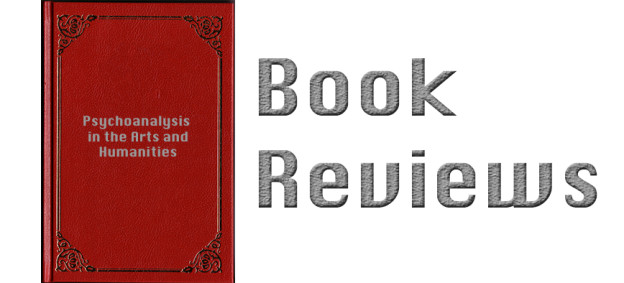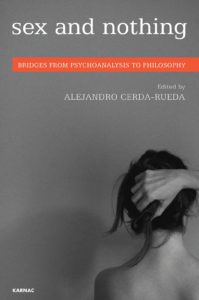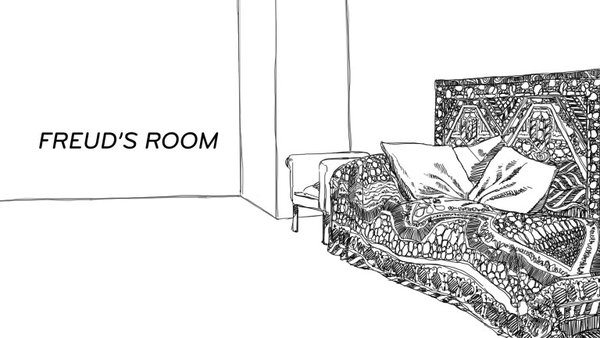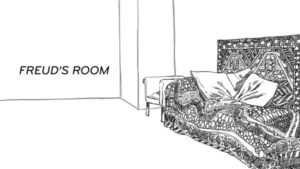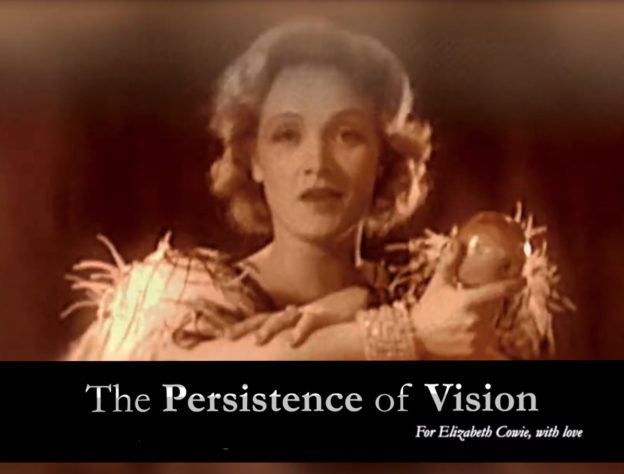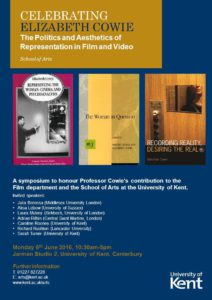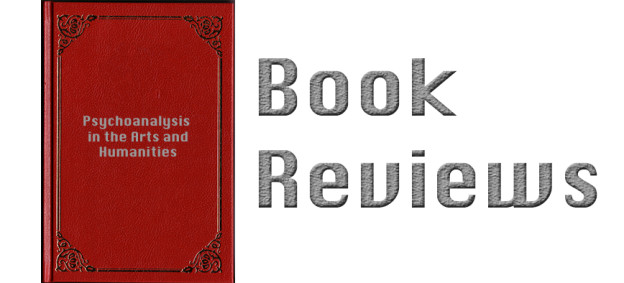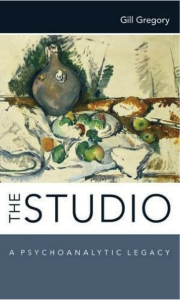Sex and Nothing: Bridges from Psychoanalysis to Philosophy, edited by Alejandro Cerda-Rueda (London: Karnac Books, 2016).
Review by Will Greenshields
‘That there is no sexual relationship, is essential in what I state.’[1] This line, uttered by Lacan in 1979, marked the conclusion of several decades of research into the nonexistence of a relationship between the sexes. It was a refutation of both the optimism expressed in Seminar XVIII (i.e. that one might, ‘one day’, be able to say of the sexual relationship that ‘“it is written [c’est écrit]”’[2]) and the idea, first mooted in Seminar XXII, that, rather than there not existing a relationship, there existed a non-relationship and that this non-relationship could be written. In the first instance the hope was that the negative axiom (‘there is no sexual relationship’) could somehow be reversed (‘there is a sexual relationship’) while the second more modestly concerned the suggestion that its negativity could be solidified into a concept that had an object, a writable form (‘there is a sexual non-relationship’). For reasons that would take too long to explain here, both efforts failed and, as Guy Le Gaufey writes,
‘There is no sexual relationship’ thus rejoins the other ‘there is no’ produced by Lacan throughout the years: ‘there is no Other of the Other’, ‘there is no metalanguage’. None of them can exhibit the object which would be valid as a proof for all bear witness to facts of internal limitations, which depend on the consistency of the predicated set, and do not depend therefore on any local singularity that can be approached, be exhibited, of which one can ‘make a case’. Each one of these statements nevertheless managed to subvert the operation of the universal and its particular by chipping away at the ‘all’ thanks to which one can lay hold of any special one of its elements, which this ‘all’ encompasses like a mother hen. In consequence, these same statements subvert the natural operation of the concept which calls for these objects, events, individuals to gather together under her protective wings. Thus they go against a whole literature in which the ‘obsessional’ disputes with the ‘jealous person’, who is differentiated or linked to the ‘pervert’, who happily takes the ‘hysteric’ as partner, etc. It opposes this psychopathological bestiary which displays its clinical entities, great consumers of ‘cases’ since these entities are fed by clinical vignettes as so many objects which ‘fall’ under them.[3]
Therefore, there is no ‘there is no sexual relationship’ beyond its own articulation. The axiom that attests to a non-existence has itself a certain nonexistence as a non-concept.
It is around this nothing that Sex and Nothing is organised. As the editor writes, ‘if something emerges from this ensemble of essays[, it] is a discussion around… nothing.’ (xix) The particular way in which this curiously empty ensemble is organised is worth noting: the book is divided into two geographically distinct parts with the first consisting of contributions ‘from Ljubljana’ and the second consisting of contributions from ‘elsewhere’. This is not gratuitous: few have done more than the Slovenian troika (Slavoj Žižek, Alenka Zupančič and Mladen Dolar) to productively examine the existence or nonexistence of a relationship between psychoanalysis and philosophy. As part of the increasingly popular practice of identifying contemporary ‘isms’ and discrete sets and subsets of thinkers, there is an interesting attempt on the part of the editor to organise the history of Ljubljanski thought into three distinct generations with each generation represented by a contributor (e.g. Žižek, Zupančič, Tomšič). Leaving aside the fact that the most celebrated member of the first generation is very much alive and still publishing books at a frantic rate, I’m not convinced that each grouping’s intellectual project is distinct enough to warrant being called a ‘generation of thought’ (xix) without somewhat devaluing the term. In any case, it is perhaps best to let the people who apparently belong to a third wave get on with things for a few decades before burdening them with the title, ‘generation of thought’.
***
It is, argues Zupančič in the book’s opening essay, only when psychoanalysis and philosophy are thought together, when sex is understood not as a series of perversions, peculiarities and practices that are to be catalogued by a sexologist or dismissed as signs of a deeper issue but instead regarded as a primary, ‘ontological lapse’, that the true import of Freud’s subversion is recognised (14). Sexuality, throughout its various instantiations and acts, retains an irreducible negativity; it is the impossibility of total satisfaction even when there are no barriers to such satisfaction. It persists as an ‘ontological lapse’ or, in Lacan’s terms, an irreducible ‘lack-of-being.’ Zupančič distils her argument into two concise points: ‘Firstly, sexuation is a lapse in being, a point where being itself is not fully being’, a point at which being always fails to be (a unified, lackless whole) (15). ‘Secondly, this lapse of being as the point of sexuation is the very void around which circulate the drives, while they are attached at the same time to this or that partial object. In this precise sense, sexuation (as pure negativity) “precedes” the drives and makes them what they are, that is to say “sexual”.’ (15) The object of the drive is not necessarily sexual in the devolved, everyday sense – as Lacan observes in Seminar VII, a collection of match boxes could do the job just as well as a particular bodily feature. Rather, it is sexual because it serves the function of obscuring the void that the drive repeatedly circumscribes. The entire ‘psychopathological bestiary’ and range of polymorphous perversities that can be found in books such as Richard von Krafft-Ebing’s Psychopathia Sexualis owe their status as sexual practices to a primary ontological fault. Finally, ‘sexuality pertains to the very being-there of the unconscious’ not because the subject does not know how to resolve this lapse by finding satisfaction, but because he does not know that he knows that it is an irresolvable and unknowable problem (this, despite all that sexologists and sex therapists think they know) (9):
Animals do not know (that they don’t know). Not completely joking, we could say that sexuality is not problematic for animals because they do not know that it actually is. Now, what distinguishes the human animal is not that it knows (that is, doesn’t know), and that it is conscious or aware of this lack of sexual knowledge in nature, but that it is “unconscious of it”. In other words, with the human animal the “we don’t know” (that we don’t know) is of a slightly different kind, it is in itself twofold or split: It involves not knowing that we know (… that we don’t know). Which is one of the best definitions of the unconscious….
The singular and revolutionary Freudian notion of the unconscious is thus not simply about not knowing as opposed to knowing. It is about knowing in the form of not-knowing, or about not-knowing as a form of knowing. A knowledge smuggles in, yet knowledge that only exists in the form of its own repression. And – we are thus returning to the initial question – it is this originally repressed knowledge (knowledge that has never existed otherwise but as repressed) that sexualises the enjoyment (the surplus pleasure related to the drives). (12-13)
Readers familiar with Žižek’s work will know what to expect from his contribution – a kinetic tour through a surprising and enlightening series of associative asides (Lars von Trier, the Talmud, haiku poetry, Mallarmé, etc.) – and what a fool’s errand it is to attempt a succinct précis. With Žižek we get sex and nothing (and ‘Gangnam Style’ and New Age philosophy and Stalin…). If Žižek manages to entertainingly add a little bulk to the pure negativity of (the concept of) sex, the great virtue of Dolar’s essay is that it convincingly cuts away at a theoretical mass that secondarily attached itself to, and obscured, this negativity (in particular, the charges of ‘phallocentrism’ and ‘phallogocentrism’).
***
It is apt that Joan Copjec’s essay opens the collection’s second half since, as an anecdote relayed in the introduction reveals, it was Copjec who first provided Žižek with a bridge ‘from Ljubljana’ (or, more precisely, a Slovenian grouping in Paris) ‘to elsewhere.’ It was also Copjec’s ‘Sex and the Euthanasia of Reason’ (published in 1994 as a chapter in Read my Desire: Lacan against the Historicists) which provided an Anglo-American audience with a first clear account of Lacan’s logic of sexuation – its philosophical stakes and its distance from the Foucauldian caricature (i.e. psychoanalysis as a taxonomising science of sex). In ‘The Sexual Compact’ Copjec echoes the main argument of Zupančič’s essay: citing Shulamith Firestone’s claim that ‘the end goal of the feminist revolution is not just the elimination of male privilege, but of the sex distinction itself’,[4] Copjec argues that the ‘gender theory’ prevalent in the 1970s and 1980s had, by concentrating on the social construction or performativity of gender, ‘not only thrust the term sexual difference out of the limelight, [but also] removed the sex from sex. While gender theorists continued to speak of sexual practices, they ceased to question what constituted the sexual. No longer the subject of serious theoretical inquiry, sex simply reverted to being what it is in common parlance: a secondary characteristic (when applied to the subject) or (when applied to acts) limited to a highly restricted – and naughty – sub-set.’ (108)
One consequence of this dissolution of the sexual into ‘multiple’ and ‘discrete instances’ has been what Copjec calls ‘the Oprah Winfrey distribution of sex: “You get a sex and you get a sex and you get a sex.” (109-110) Far from eliminating ‘the sex distinction’, gender theory has heralded a veritable efflorescence of distinctions but such distinctions concern symptomatic or sublimatory practices (qua individual responses to the void of sexuality – that is, ‘the point at which being is not fully being’) and not the ‘ontological lapse’ itself. As Copjec puts it: ‘Why multiple rather than divided; why not multiple because divided? The former alternative shirks from thinking difference in favour of simply adding another one to a previous one, indefinitely: 1+1+1…’ (110) Of course, when compared to the on-going growth of acronyms, the Lacanian contention that there are two sexes – that is, not two biological organisms but two stances with respect to the void (i.e. one that pre-tends to fill or disavow it and one that does not) – can look terribly old hat and, to cite Judith Butler’s term, ‘heteronormative.’ Nonetheless, Copjec effectively argues why we should avoid attempting to replace sex and nothing with sex and an infinite series of somethings in the name of a well-meaning pluralism (this is, of course, not to deny the existence of any +1).
In response to Lacan’s increasing reliance on mathematical analogies in explaining sexuality, an attendant at the fourteenth seminar (The Logic of Fantasy) is said to have joked that it might be necessary to bring a slide rule to the bedroom.[5] In ‘Mathematics in the Bedroom: Sex, the Signifier and the Smallest Whole Number’ Sigi Jöttkandt treats Lacan’s idiosyncratic deployment of mathematics rather more seriously, providing us with one of the first clear and systematic accounts of Lacan’s earlier (that is, prior to the celebrated logic of sexuation) attempts at formalising sexuality. Once again, Lacan’s preference for logic and mathematics (over and above myths or case studies) is related to the nature of the subject at hand: there is a particular negativity to the (algebraic) letter; it is empty of meaning and symbolism and yet it obeys certain laws that dictate its relationship with other letters. The ‘ontological lapse’ as a structural or formal flaw caused by the signifier would be in danger of resembling an occasional and secondary instance were it presented in the form of case studies or a ‘mother hen’ concept (collecting under its wing all of these secondary instances) were it presented in the form of a universal myth.
In each of the book’s two parts the essays that directly concern sex and nothing are succeeded by essays that branch off in other productive directions (one can, after all, only talk about nothing for so long…). We shall leave the reader to encounter these for himself, save to say that they include the best available account of Lacan’s ‘anti-philosophy’ (from Samo Tomšič), an demonstration of the productive relation between Lacanian psychoanalysis/anti-philosophy and continental philosophy (from Jelica Šumič) and a novel and highly persuasive periodisation of Lacan’s thought (from Gabriel Tupinambá). Alain Badiou is also invoked in several of the articles as a representative of the second side of the bridge between psychoanalysis and philosophy, most notably in Daniel Tutt’s ‘Love, Psychoanalysis and Leftist Political Ontology’. Unfortunately, such is the massive scope of the essay, the complexity of the theoretical systems discussed – Badiou is no easier to wrap one’s head around than Lacan – and the extraordinary amount of stances that Lacan adopted with respect to concepts such as love (Jean Allouch devotes some 600 pages to this subject in L’amour Lacan), one is left with the impression that, while it is an admirable achievement of erudition to summarise and combine in some seventeen pages the theses of Giorgio Agamben, Jean-Luc Nancy, Heidegger, Eric Santner, Žižek, Badiou and Lacan, this sophisticated mélange would perhaps be better suited to the book format – not least because it might allow the author space to provide some more concrete examples of the co-implication of love, psychoanalysis and leftist political ontology beyond the very familiar Žižekian references to St Paul and Antigone.
In summary, this collection serves as the perfect foil to 2016’s other book on Lacan and sex (Lorenzo Chiesa’s more focussed and forensic The Not-Two: Logic and God in Lacan) and provides a welcome reminder of the importance and distinctiveness of the psychoanalytic conceptualisation (or non-conceptualisation) of sex as neither a matter of biological essentialism nor post-structuralist gender theory.
Notes
[1] Jacques Lacan, The Seminar of Jacques Lacan Book XXVI: La topologie et le temps, 1978-1979, unpublished, 9/1/79.
[2] Jacques Lacan, The Seminar of Jacques Lacan Book XVIII: On a Discourse that might not be a Semblant, 1970-1971, trans. Cormac Gallagher from unedited manuscripts, session 7, p. 20.
[3] Guy Le Gaufey, ‘The Scholion: A Misuse of Metaphor’, trans. Cormac Gallagher in The Letter: Irish Journal for Lacanian Psychoanalysis, 47 (Dublin: 2011), pp. 81-82.
[4] Shulamith Firestone, The Dialectic of Sex (New York: Bantam, 1972), pp. 10-11.
[5] This is relayed by Cormac Gallagher in ‘Sexual Difference in The Logic of Phantasy’ in The Letter: Lacanian Perspectives on Psychoanalysis, 17 (Dublin: 1999), p. 7.

